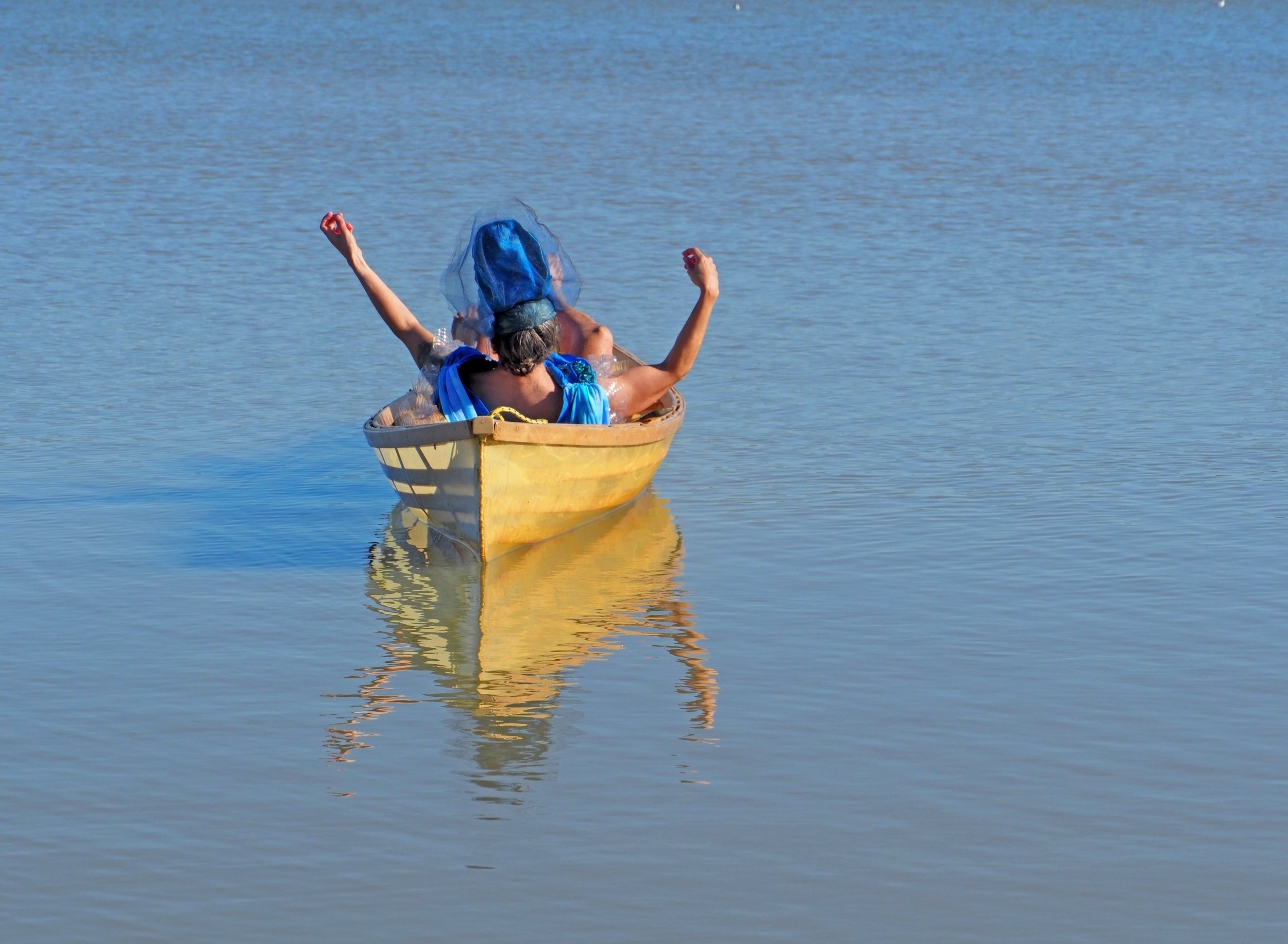
Butoh Ecologies
I am a butoh artist and performance studies scholar focusing primarily on outdoor site-adaptive dance and ecology in my writing, dance practice, and performances. Butoh, an avant-garde dance developed in Japan in the late 1950s and 1960s that has since become global and multiply-local, offers a rich field in which to investigate ecological practices because it is fundamentally about the transformation of the dancing body into something else: a tree, an animal, a mythic creature. This transformation of the butoh body is a fundamental ecological skill and adaptive strategy: to be willing to shift who we are as human individuals in order to ensure collective survival of the more-than-human world. Butoh Ecologies is an ongoing project that uses butoh to research embodied practices that address one of the fundamental issues underlying climate change: humans’ evident inability to see their own futures as inextricably linked to that of the environment around them. My work to date on this has two main pathways: ethnographic research coupled with historiography directed toward written scholarship, and practice research that finds its form in both workshops and performances. In both pathways, dance practice provides the opportunity to research creative ecological practices through doing.
In the first case, my research to date at butoh training programs in Sweden, the Northern Basque Country, Italy, Mexico, and the United States, as well as my historical research in Japan, suggests that the alternate embodied ecological processes environmental scientists and activists seek in order to make an impact on climate change already exist in international nature-based butoh dance training workshops. In the second case, I have been developing site-adaptive dance practices and practice research since 2019 under the name aqueous with the intention of cultivating the attention of audience members and performers to the sources and locations of water around them, including its seasonal, geologic, and geographic abundance and scarcity.
Performance Research
aqueous is an ongoing site-adaptive dance performance with the intention of cultivating the attention of audience members to the sources and locations of water around us, including its seasonal, geologic, and geographic abundance and scarcity. It features choreography and performance by Rosemary Candelario. Collaborators include Sarah Ruth (music and voice), Rachel Hudson (costume design), Brian O’Connor (boat design and building), and Irene Klaver (environmental philosopher).
The piece is available to tour to sites across Texas in partnership with local environmental and nature-based community organizations, academic institutions, and other presenters and project partners.
aqueous was the subject of a feature in Glasstire by Anna Adami.
Written Research
Butoh Ecologies: Dancing with Nature as Embodied Ecological Praxis is a multisite case study that uses dance training and performance to research embodied practices that address one of the fundamental issues underlying climate change: humans’ evident inability to see their own futures as inextricably linked to that of the environment around them. Butoh is an avant-garde dance developed in Japan in the late 1950s and 1960s that has since become global and multiply-local. It offers a rich field in which to investigate ecological practices because it is fundamentally about the transformation of the dancing body into something else: a tree, an animal, a mythic creature. Addressing a variety of artists and training projects from around the world, this project argues that butoh practices cultivate a radically reordered corporeality that challenges anthropocentrism, a bodily sensitivity to connections constituted by the ecology itself, and an embodied and practiced ecological consciousness fundamentally attuned to interdependence.
The book in progress argues that the alternate embodied ecological processes environmental scientists and activists seek in order to make an impact on climate change already exist in international nature-based butoh dance training workshops. I analyze the practices of butoh dancers from Japan, Sweden, Italy, Mexico, Australia, The Netherlands, and the United States whose work helps participants learn and rehearse interdependent relationships with the more-than-human world. Dancing Ecology uses Dance Studies methodologies to contribute body-based approaches to Environmental Studies. It also contributes to Japanese Studies by drawing attention to the important work of a Japanese dance form around the world.
Related Publications:
Butoh Ecologies: Dance Practice as Training for a New Relationship with the Environment in Arcade: The Humanities in the World
“Dancing with hyperobjects: ecological Body Weather choreographies from Height of Sky to Into the Quarry.” Choreographic Practices 9, no. 1 (2018): 45-58.
“Dancing the Space: Butoh and Body Weather as Training for Ecological Consciousness.” In The Routledge Companion to Dance Studies, edited by Stacey Prickett and Helen Thomas, 11-21. London: Routledge, 2019.



